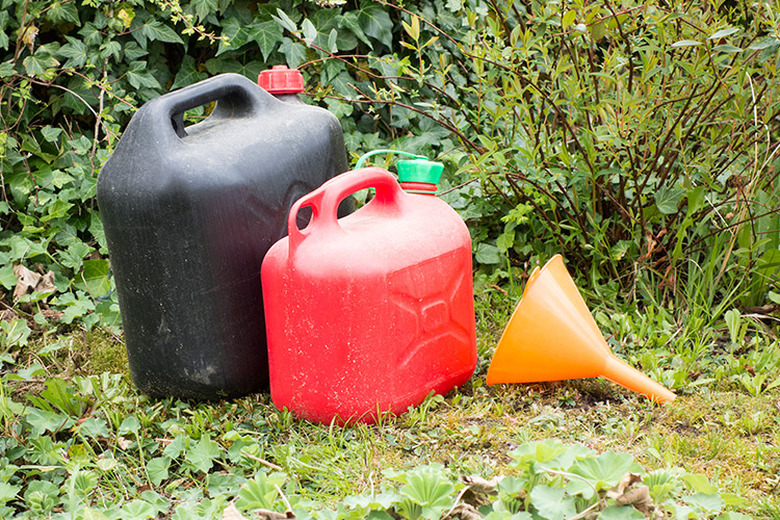My Dog Got Gasoline On His Paws
Whether you've spilled gas in your yard or garage, or your dog has stepped in some during a walk or an escape, you'll want to act as fast as possible to remove the hazardous substance from her paws. Gasoline and other petroleum products absorb through the skin and can cause toxicity. Your dog is also susceptible to poisoning via inhalation of fume as as well as via ingestion, which is likely in the event that she attempts to lick her paws clean.
Items You'll Need:
• Washcloths
• Dish detergent or olive oil
• Towel
Step #1 - Carry your dog directly to the kitchen sink if possible. Wrap your arms around her body to keep her from being able to lick her paws with gasoline on them. If you're unable to lift and carry your dog, lead her to the kitchen sink and prevent her from licking her paws; enlist a pleasant member of the household if one's available.
Step #2 - Wet your dog's paws by holding them under warm running water if you can; if not, wet them using a clean washcloth and warm water. Even if you think only one paw is soiled, wash them all just in case. Start with the most heavily soiled paw and work your way to the cleanest.
Step #3 - Pour a liberal amount of dish detergent onto the wet washcloth. Use a second washcloth if you wet your dog's dirty paws with the first one. Fold it and rub it against itself vigorously to work up a lather. Scrub your dog's dirtiest paw. If you don't have dish detergent on hand, or if it doesn't seem to be doing the job, try olive oil instead.
Step #4 - Rinse and squeeze out the washcloth well. Reapply dish detergent, create a lather, then wash the next paw. Repeat this until you've cleaned all four paws.
Step #5 - Dry your dog's paws gently with a clean towel.
Step #6 - Clean up any gasoline your dog may have tracked into the house if you didn't carry her in. Get to it right after finishing with her paws, before she does. Wet washcloths and dish detergent will do the job on the floor, too.
Step #7 - Monitor your dog closely for two hours for signs of toxicity. Red or irritated skin, labored breathing, tremors, vomiting, diarrhea, staggering or loss of coordination, a blue or purple tint to the tongue and gums, drooling, head shaking, pawing at the mouth, coughing, retching, gagging, repeated chomping or other abnormal jaw movements, irregular heartbeat and loss of consciousness are the primary signs and symptoms. If you notice any of these or something else unusual, go to your vet's office or a veterinary hospital right away.
Warning: If you think your dog has been poisoned by gasoline, don't induce vomiting. It can occur via skin absorption and inhalation as well as ingestion. However, even if your dog did consume gasoline, it can do as much or more damage coming back up as it did going down.
By Jon Mohrman
References
PetMD: Poisoning by Petroleum Products in Dogs
PetPlace.com: Gasoline and Petroleum Toxicity in Dogs
Nature's Way for Pets: Care of Dog Paws
About the Author
Jon Mohrman has been a writer and editor for more than seven years. He specializes in food, travel and health topics. He attended the University of Pittsburgh for English literature and San Francisco State University for creative writing.
